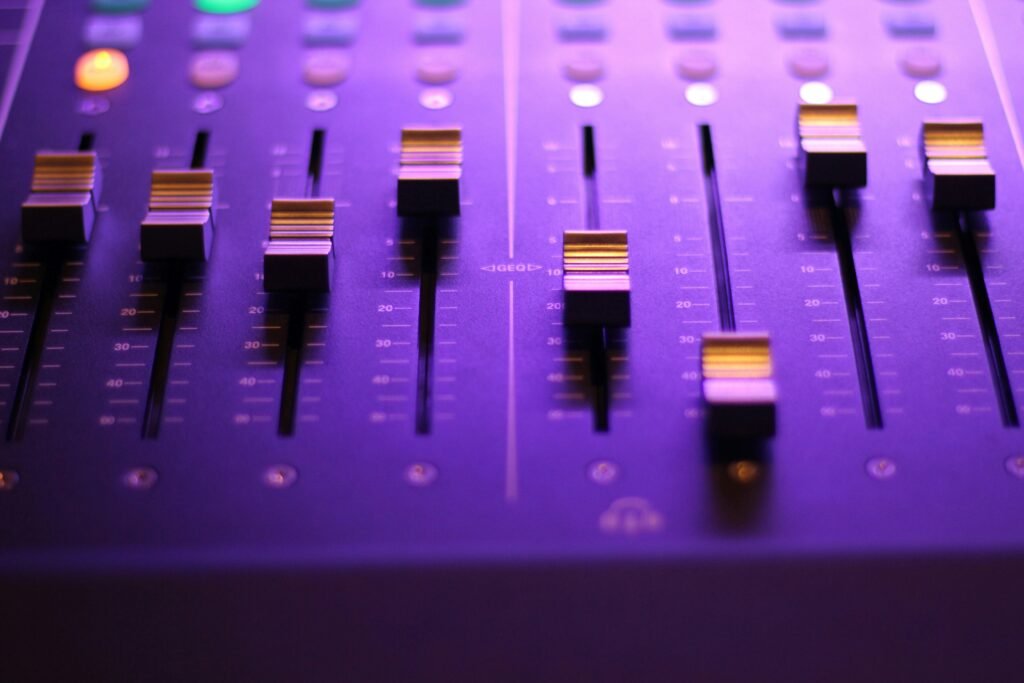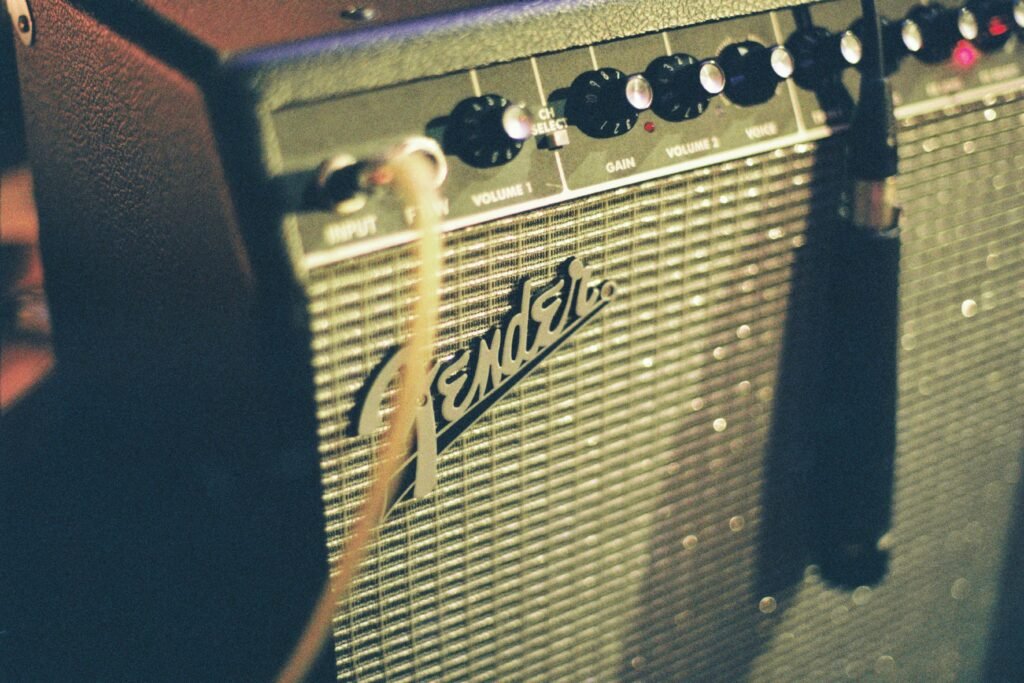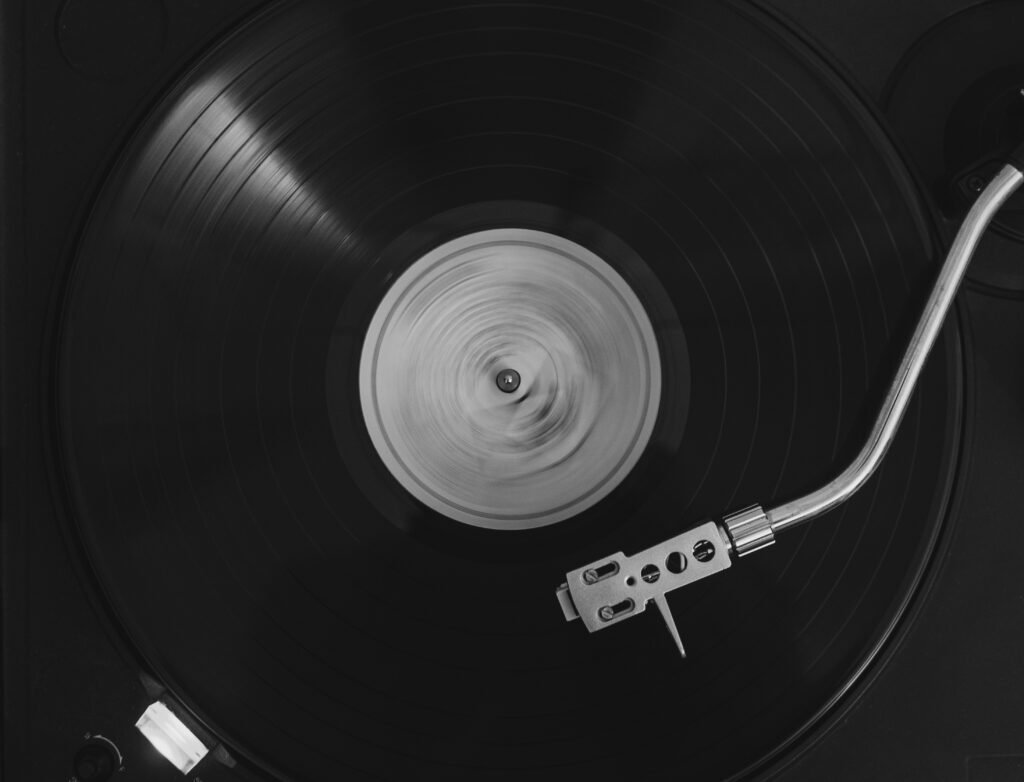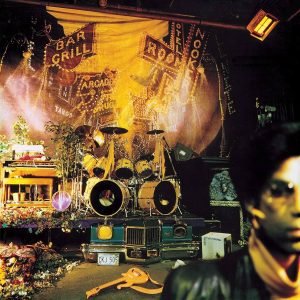By the time Sign O’ The Times hit shelves in March 1987, Prince was already a dominant force in popular music. He had just come off the lush, genre-defying double album Parade and the dissolution of his band The Revolution. With Purple Rain, Around the World in a Day, and Parade, Prince had built a trilogy of albums that blended funk, psychedelia, and pop into something unmistakably his own. But Sign O’ The Times marked a turning point. Gone were the theatrics and band-driven dynamics. In their place stood a leaner, more introspective artist, pushing his sonic boundaries even further.
This double LP didn’t just reflect where Prince was musically. It also responded to the late 1980s—an era shadowed by the AIDS crisis, crack epidemic, Reagan-era politics, and global unrest. Rather than retreat into fantasy, Prince chose to confront reality. The result is a sprawling collection of songs that weave personal reflection with social commentary, layered through a mix of funk, soul, rock, electro, and even jazz.
At its heart, Sign O’ The Times feels like Prince reintroducing himself. He recorded most of it alone, curating songs from various abandoned projects including Dream Factory, Camille, and Crystal Ball. While some of these songs carried over their sonic DNA, Prince reimagined them to fit a more personal vision. He wanted to create something ambitious yet human, political yet passionate. This was not just an album. It was Prince holding a mirror to the world and to himself.
Sonic Exploration

Sign O’ The Times is an album built on contrasts—sonic textures that shift from sparse to ornate, from raw to refined. The production is a tapestry of high fidelity and deliberate imperfection. On the title track, Prince strips things down to near-nothing: a skeletal drum machine beat, a pulsing synth bass, and his voice, urgent and almost uncomfortably close. It’s lo-fi in spirit, but not in clarity. This minimalism gives the song’s social critique more weight, as if the arrangement dares the listener to focus only on the message.
Elsewhere, Prince returns to the densely layered production he had become known for. “If I Was Your Girlfriend” is a masterclass in avant-garde soul, with warped vocal manipulation and off-kilter rhythms that still somehow lock into a groove. “Housequake” erupts with tight horns and pounding beats, a nod to James Brown’s funk blueprint but filtered through Prince’s hyperactive imagination. “The Ballad of Dorothy Parker,” recorded in mono due to a studio equipment glitch, is one of the album’s most enchanting accidents—its muffled mix only enhances the song’s dreamlike atmosphere.
Vocally, Prince is in top form. He shifts between falsetto, baritone, and his sped-up alter ego Camille, using his voice as a flexible instrument rather than a fixed identity. Tracks like “Adore” showcase lush, gospel-inspired harmonies layered with surgical precision, while “Strange Relationship” dances with sitar-like keyboards and a dry, biting vocal tone that feels both sarcastic and intimate.
Genre Elements
Genre-wise, Sign O’ The Times is a genre chameleon. It reaches into funk, rock, soul, gospel, jazz, electro, and pop without ever sounding disjointed. “I Could Never Take the Place of Your Man” delivers a straight-ahead rock riff with a sparkling pop sheen. “It” dives into carnal synth-funk, while “The Cross” climbs into a spiritual crescendo that leans into gospel and rock. Prince doesn’t just blend genres—he reinvents them in real time. The result is a musical mosaic that is as unpredictable as it is cohesive.
Lyrical Analysis

The lyrical landscape of Sign O’ The Times is as expansive and varied as its sound. Prince, ever the shapeshifter, weaves through themes of social decay, spiritual yearning, sexual vulnerability, and romantic introspection. The title track sets the tone. With sharp, journalistic precision, Prince catalogs the crises of the era: AIDS, drug abuse, gang violence, and geopolitical tension. His delivery is calm, but the subject matter is urgent, turning the song into a kind of modern gospel—a call for awareness, if not salvation.
Throughout the album, Prince moves between the personal and the political with ease. “The Cross” is perhaps the most overtly spiritual moment on the record, turning suffering into a vehicle for redemption. In contrast, songs like “It” and “Hot Thing” plunge deep into desire, but not without complexity. There’s always a tension in his eroticism—between control and surrender, fantasy and reality.
One of the album’s most lyrically intriguing tracks is “If I Was Your Girlfriend.” Here, Prince blurs gender lines and emotional boundaries, asking whether intimacy requires romantic love, or if the deepest connection might actually be platonic. It’s an unsettling question, posed with vulnerability and wit. Similarly, “Strange Relationship” explores emotional masochism, capturing the push-pull of a toxic connection with razor-sharp phrasing and dry humor.
Themes
There are recurring motifs of duality—between love and loneliness, ecstasy and emptiness. Even in jubilant tracks like “U Got the Look,” there’s an undercurrent of chaos, as if even pleasure comes with its own complications. “Forever in My Life,” a minimalist ballad, reveals its confessional tone through repetition and restraint, making the longing in Prince’s voice all the more poignant.
Prince’s lyrics often walk the line between poetic abstraction and direct storytelling. He can be cryptic one moment, then piercingly clear the next. But even at their most enigmatic, his words are emotionally precise. They invite the listener to not just hear his world, but to feel it—to wrestle with it, question it, and maybe even find themselves in it.
Cohesion and Flow

On the surface, Sign O’ The Times can feel like a patchwork. Its origins lie in three separate, unfinished albums, and it spans a wide range of styles, tones, and lyrical subjects. Yet, somehow, it moves with a surprising sense of purpose. The sequencing doesn’t follow a linear narrative, but there is an emotional and thematic arc that gives the album its cohesion.
Track Progression
The title track opens the album with a stark and sobering tone, grounding listeners in the real-world concerns that shaped the era. From there, Prince steadily builds a world that is both deeply personal and vividly imagined. Tracks like “Play in the Sunshine” and “Housequake” inject bursts of joy and kinetic energy, offering release after the heaviness of the opener. This dynamic push and pull—between darkness and delight, introspection and escapism—continues throughout the record.
Midway through the album, the mood shifts toward intimacy and emotional vulnerability. “If I Was Your Girlfriend” and “Forever in My Life” slow the pace and deepen the introspective tone. These tracks act as emotional anchors, grounding the more experimental moments and giving the album a reflective core. Even as the genres shift, from funk to soul to electro-pop, Prince never loses his grip on the emotional thread. Each track feels like a chapter in a larger story about love, identity, and survival.
Thematic Consistency
There are moments where the transitions between songs are abrupt. For instance, the jump from the sensual “It” to the gospel-tinged “The Cross” could feel jarring. But these shifts are intentional, designed to jolt the listener and force a reevaluation of the emotional terrain. Rather than a smooth ride, Sign O’ The Times offers a dynamic journey, marked by sudden turns and new perspectives.
Despite its eclecticism, the album holds together because of Prince’s singular vision. The thematic threads—social consciousness, romantic complexity, spiritual searching—are woven through every track, even if they’re expressed in different forms. It’s this balance between diversity and unity that makes the album feel both sprawling and deeply cohesive.
Standout Tracks and Moments
With sixteen songs spanning a double LP, Sign O’ The Times is rich with moments that linger long after the music fades. Yet a few tracks rise to the surface, crystallizing the album’s ambition and Prince’s unmatched creativity.
Sign O’ The Times
The title track, “Sign O’ The Times,” stands as one of the most haunting openers in pop music. Its bare-bones arrangement lets the lyrics shine with unfiltered urgency. Prince speaks rather than sings, and each line hits like a headline—condensed, shocking, and true. It’s not just a song. It’s a dispatch from a crumbling world, delivered with chilling calm.
If I Was Your Girlfriend
“If I Was Your Girlfriend” is another high point, both musically and lyrically. The pitched-up vocals, sparse funk groove, and deeply intimate lyrics push the boundaries of what a love song can be. Prince’s willingness to question gender roles and emotional intimacy makes it one of the most innovative songs of his career. It’s not just about wanting to be close to someone—it’s about wanting to understand them completely.
Housequake
“Housequake” bursts in with infectious energy and unapologetic funk. The rhythm is tight, the horns are punchy, and Prince’s command is total. It’s a track that sounds like it was made to be played loud, a chaotic but controlled eruption of dancefloor swagger.
Adore
“Adore,” tucked away at the end of the second disc, is the album’s quiet storm jewel. With lush harmonies and a soaring falsetto, Prince crafts a love song that feels timeless. The vocal delivery alone—pleading, tender, reverent—is a masterclass in emotional expression. When he sings, “Until the end of time, I’ll be there for you,” it’s impossible not to believe him.
Memorable Moments
One memorable moment lies in “The Cross.” It starts with a gentle strum, building slowly before erupting into a cathartic climax of distorted guitars and spiritual urgency. It’s not just a song—it feels like a prayer, an exorcism, and a sermon all at once.
Even smaller gestures resonate. The pause in “Forever in My Life,” where Prince drops out most of the instruments and lets his layered vocals swirl in space, is disarming in its simplicity. It reminds the listener just how much he could do with so little.
Artistic Contribution and Innovation

Sign O’ The Times is not only a defining moment in Prince’s career, but also a watershed in popular music. At a time when the industry was increasingly leaning into synthesized pop formulas and highly polished production, Prince chose complexity over conformity. He delivered a double album that challenged expectations, both sonically and thematically, refusing to be boxed into any one genre or message.
In the context of late 1980s pop, this record stood apart. While Michael Jackson was preparing the immaculate sheen of Bad, and U2 was moving into politically charged rock with The Joshua Tree, Prince offered something more fragmented and intimate. He didn’t smooth out the edges—he emphasized them. Funk was deconstructed. R&B was reimagined. Rock was spiritual. Even electronic elements were used not for gloss but for grit. This wasn’t genre-blending for novelty’s sake. It was Prince using every tool at his disposal to build a singular, uncompromising vision.
Innovation
One of the album’s most innovative qualities lies in its structure. Few artists at the time—if any—were releasing double albums that maintained such artistic coherence while experimenting so freely. Prince juggled alter egos, including the gender-fluid Camille persona, and pulled songs from scrapped projects without making the final product feel disjointed. Instead of forcing a linear narrative, he let the messiness of life itself serve as the unifying theme.
Production-wise, Prince’s use of the Linn LM-1 drum machine reaches a creative peak here. Rather than use it as a stand-in for acoustic drums, he made it a character in its own right. On tracks like “Sign O’ The Times” and “The Ballad of Dorothy Parker,” the machine becomes a heartbeat—dry, irregular, and emotionally evocative. His manipulation of vocal textures, especially the pitched-up Camille voice, also pushed the boundaries of identity and performance in pop music.
Lyrically, Prince ventured into territory few mainstream artists dared explore. He tackled religion, addiction, loneliness, gender roles, and political decay—all within the same album. He did this without heavy-handedness, often couching his observations in poetic ambiguity or playful seduction. This ability to be profound without preaching, to be sexy without being shallow, is one of Prince’s enduring artistic gifts.
Closing Thoughts

Sign O’ The Times is a rare achievement in modern music—an album that manages to be sprawling without losing focus, experimental without feeling indulgent, and deeply personal while speaking to larger social truths. Its greatest strength lies in its fearless ambition. Prince stretches himself across sound, subject, and style, yet never once does the work feel forced. Each track carries its own weight, and taken together, they form a kaleidoscopic portrait of a genius unbound.
There are few weaknesses here, though the album’s eclectic nature may initially feel disorienting to those looking for a more streamlined listening experience. But that disorientation is part of its genius. Prince wasn’t interested in perfection. He was interested in expression, and in capturing the contradictions of life—joy and sorrow, love and loss, clarity and chaos.
For listeners, the impact of this album is both immediate and lasting. First-time audiences will be struck by its audacity and emotional range. For longtime fans, it remains a benchmark of artistic maturity—a moment where Prince, newly solo again, proved that his creative fire burned brighter than ever. Its influence continues to ripple through decades of genre-bending music and artists who see no boundary between the personal and the political.
Official Rating: 10/10
This perfect score isn’t about flawless execution in the traditional sense. It’s about fearlessness, vision, and emotional depth. Sign O’ The Times doesn’t just succeed as an album. It transcends its time and format, becoming a living document of what music can be when an artist trusts their voice enough to follow it wherever it leads. Prince didn’t just make a great album. He made a masterpiece.
